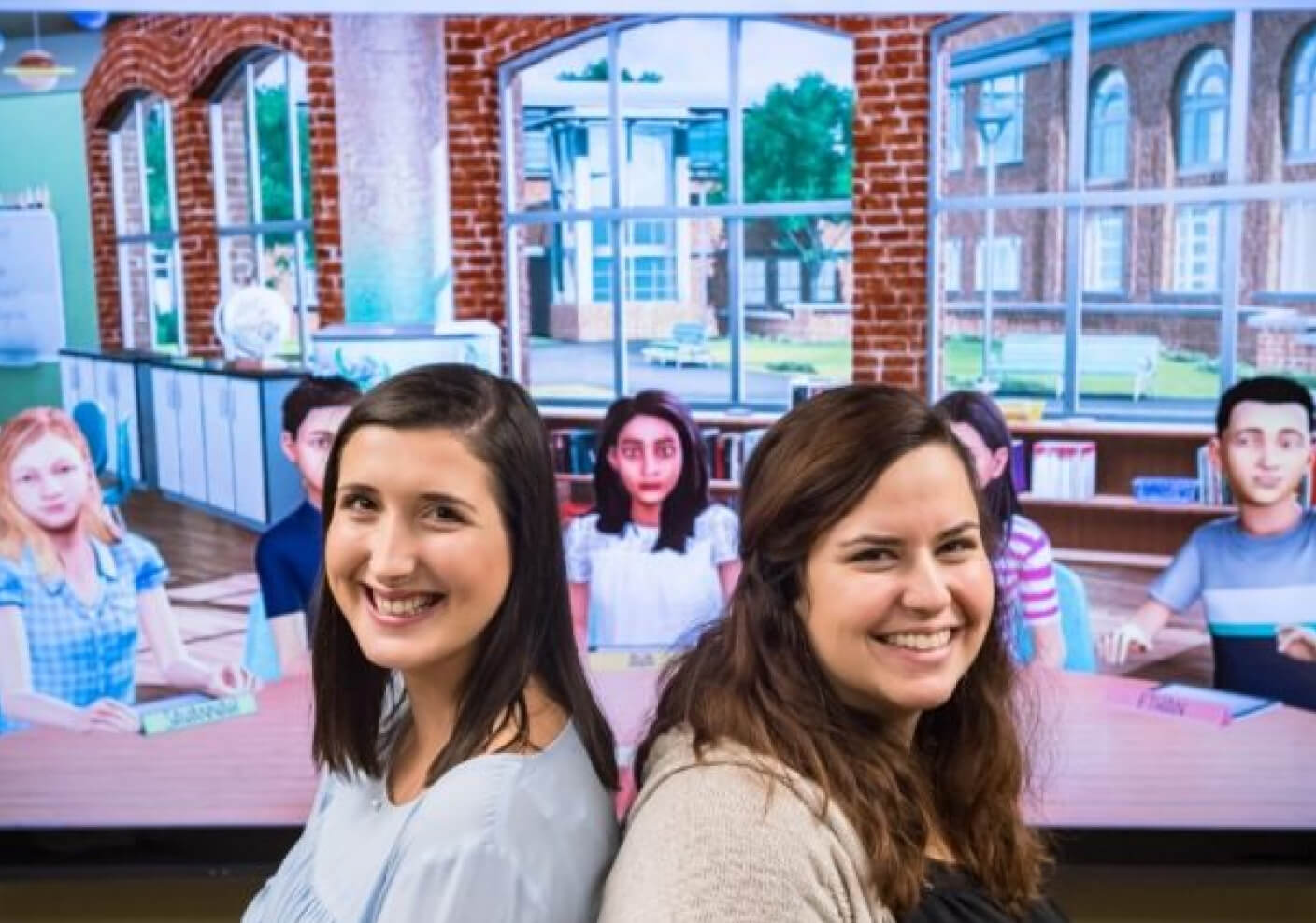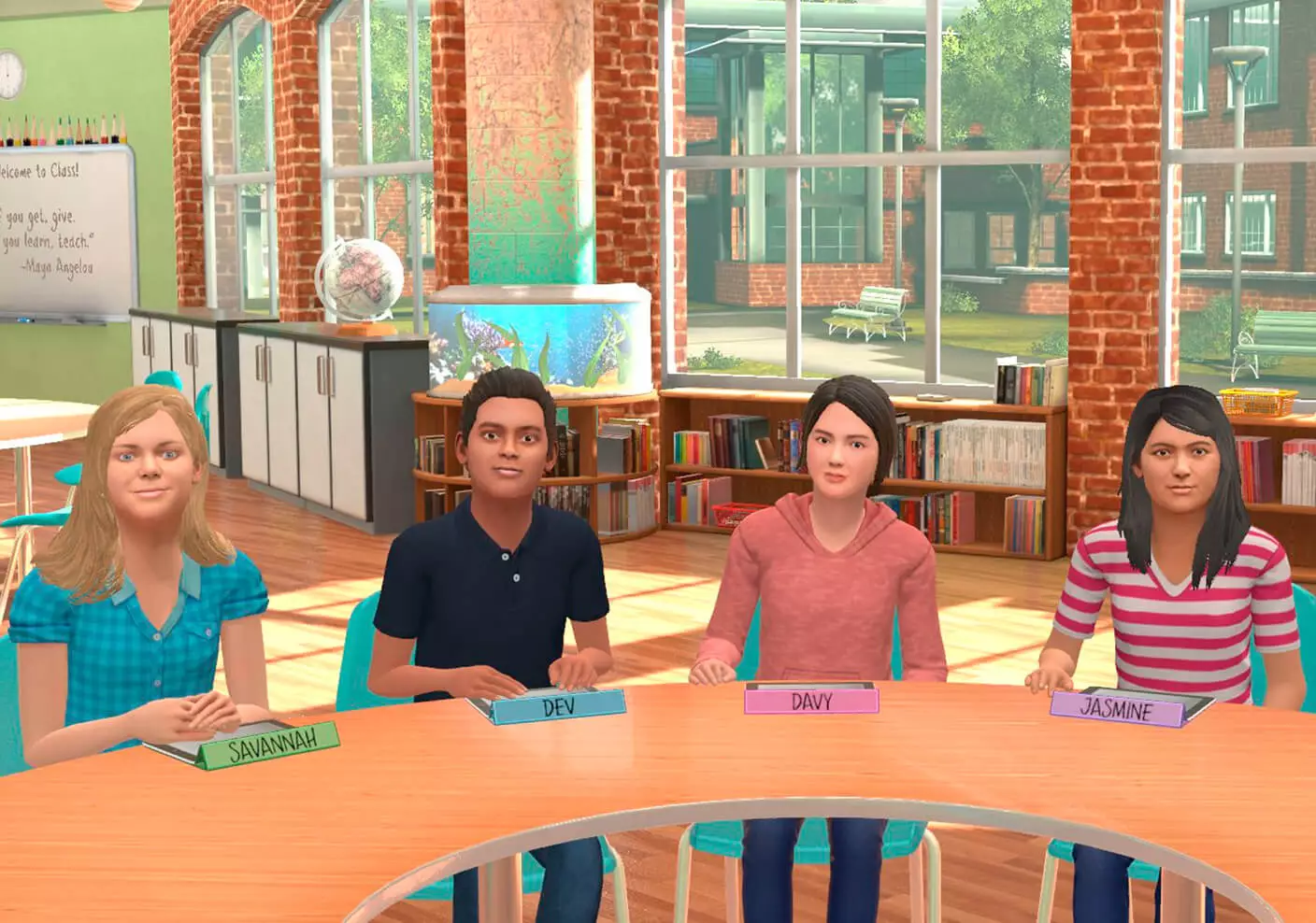“Currently, under normal times, this would not count in Texas. This may change with pandemic issues,” chimed a participant at a recent Mursion Roundtable webinar. This was not an ordinary Zoom event though. It was a gathering of educators to test drive a classroom simulation for “Introducing Content for Middle School.” Messages in the chat were flying. In true teacher form, they were engaged, curious, forthright and funny. Several chat messages started with “I’m here to learn…”
What does it actually mean to train a teacher candidate in a simulated classroom? What does that look like? How does it feel? One brave volunteer blurted “I’m terrified…and excited, but mostly terrified.” For those who’ve observed a first-time participant jump into a simulation, what follows is quite predictable. The learner starts out very tentative. Within minutes of the student avatars appearing on screen, they’re conversing and chuckling at the students’ responses. Then at their command “pause simulation,” they pop out of the scenario with a sigh and a wow. “That was very realistic,” is the usual description of this new experience.
Parents across the country would be comforted if they saw the quality of educators that gathered–certain that they would need to stretch beyond their comfort zones,as they pondered the future of teacher education. They were looking for a solution to help protect the nation’s pipeline of teachers.
As the Roundtable session wound down, a discussion was afoot: which states would accept teacher training via simulation? With 35 of 50 U.S. states represented, the opinions ran the gamut. The only consensus was this mode of training deserved serious consideration. While a public health crisis may have put training via simulation on their radar, it was clear to everyone that this is not a one-off. This may become a permanent feature of how teachers will be trained.
As Dr. Carrie Straub, Executive Director of Education Programs and Research at Mursion, said there is no replacement for the gold standard in classroom experience. However, in light of the times, this is a viable–effective, scalable, cost effective–approximation of the real thing. This mode of teacher training will count, including in Texas, most likely sooner than we imagined.
At Mursion, our ultimate “work product” is an individual’s confidence. The kind that has to be earned through a cycle of practice and feedback. It’s very similar to how athletes train by drilling. Targeting gaps and weaknesses to the point of eradication. Practice, practice, practice. In this case, in a safe place where mistakes are not so risky and costly. As we like to say, practice makes permanent.
When asked for final feedback whether or not the Roundtable was worth their time, one educator said “Great…tight…no nonsense. You are clearly practiced. This was really good!” There’s that word again: practice.
To see how Mursion is collaborating with the American Association of Colleges for Teacher Education (AACTE) to support teacher prep, please visit aacte.org/vrclassrooms. (Photo credit: Ed Prep Matters Blog)
Subscribe for the latest Mursion articles and updates.
By clicking the sign up button above, you consent to allow Mursion to store and process the personal information submitted above to provide you the content requested. View our Terms and Conditions.




